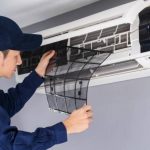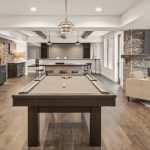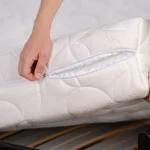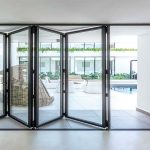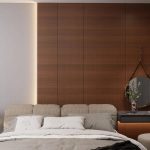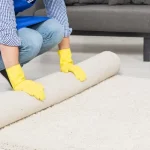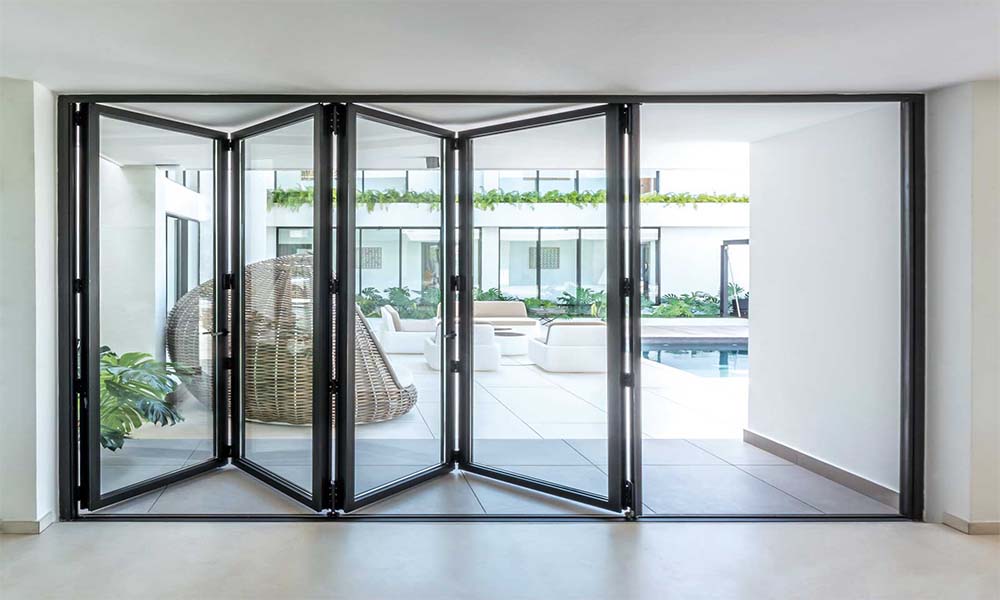Installing folding, sliding, or casement doors in your home is a practical and stylish way to enhance functionality, aesthetics, and energy efficiency. These modern door types come with unique installation processes, each requiring attention to detail and professional considerations to ensure optimal results. In this blog, we’ll break down installation tips for these three popular door styles, while focusing on key aspects like preparation, material selection, and post-installation care.
-
Folding Doors
Aluminum folding doors, also known as bi-fold doors, transform spaces by allowing seamless transitions between rooms or between indoor and outdoor areas. Proper installation ensures smooth operation and alignment.
Key Installation Tips for Folding Doors
Measure Twice, Cut Once: Before installation, ensure the opening is measured accurately. Folding doors need precise dimensions, as the panels depend on proper alignment for folding and sliding smoothly.
Secure the Track System: Folding doors rely on upper and lower tracks for smooth operation. Ensure the tracks are properly anchored to the structure and completely level. Uneven tracks can lead to doors sticking or misaligning.
Choose Quality Hinges and Hardware: These doors wear with frequent use, so opt for durable hinges, guides, and locks to avoid repairs down the line. Stainless steel or anodized aluminum is recommended for weather-resistant hardware.
Check Clearance: Folding doors need adequate space to fold and stack neatly without obstructing walls or furniture. Make sure clearance is sufficient for both practical use and aesthetic appeal.
Seek Professional Assistance for Large Panels: Oversized folding doors can be heavy and difficult to maneuver during installation, so professional help may be necessary to ensure stability and safety.
-
Sliding Doors
Aluminum sliding doors are sleek, space-saving options that blend form and functionality. Their installation process emphasizes precision and smooth movement.
Key Installation Tips for Sliding Doors
Inspect the Wall or Surface: Before installing sliding doors, confirm that the wall or surface is strong enough to support the door and its track system. Reinforcement may be needed for heavy glass or solid wood panels.
Ensure the Tracks Are Level: Sliding doors function based on the tracks, so leveling them during installation is critical. Any misalignment will result in doors that stick or fail to close properly. Use a spirit level to double-check during the fitting process.
Seal for Weatherproofing: For exterior sliding doors, ensure weatherproof seals are installed correctly around the edges to prevent drafts, water leakage, or heat loss. High-quality rubber or silicone weatherstripping works well.
Test for Smooth Sliding: After installation, check the rollers and rails to verify that the door opens and closes smoothly. Lubricate the track if necessary to prevent friction over time.
Install a Secure Locking System: Sliding doors often feature large glass panels, so installing sturdy locks and handles is essential for safety and security.
-
Casement Doors
Aluminum casement doors, similar to casement windows, are hinged doors that swing inward or outward. Their timeless design makes them suitable for a variety of architectural styles. Proper installation ensures they function effectively without gaps or interference.
Key Installation Tips for Casement Doors
Select the Correct Hinges: Depending on the direction the door swings (inward or outward), make sure the hinges are suited to the desired opening configuration.
Double-Check the Frame Alignment: Unlike sliding or folding doors, casement doors rely entirely on their hinges and frame for support. Ensure the frame is square and plumb to avoid uneven gaps or awkward door movement.
Pay Attention to Seal Placement: Proper sealing is essential for casement doors, as gaps can lead to drafts or energy inefficiencies. Use compression seals along the edges to provide a tight fit.
Test the Swing Radius: Before locking the installation in place, test the swing radius to ensure the door opens and closes without hitting walls or furniture. This is especially critical in tighter spaces.
Inspect Security Features: Casement doors often accommodate multiple locking points, improving home security. Ensure these locks are properly integrated during installation for ease of use and protection.
General Tips for All Door Types
Regardless of the type of door you’re installing, there are a few universal tips to keep in mind:
Hire a Professional (When Necessary): While some door installations can be DIY-friendly, complex or oversized doors (especially glass ones) may require a professional installer to ensure safety and flawless function.
Use High-Quality Materials: Invest in durable frames, panels, tracks, and hardware to increase the longevity of your doors and reduce maintenance costs over time.
Prepare for Repairs: Keep spare parts like rollers, hinges, and screws handy for occasional adjustments or long-term replacements.
Follow Manufacturer Instructions: Carefully read the installation guide provided with your door system to ensure proper setup and to maintain warranties.
After Installation: Maintenance Tips
Once your folding, sliding, or casement doors are installed, regular upkeep can keep them operating smoothly:
Clean Tracks and Hinges: Dirt and debris can accumulate over time, affecting movement. Periodically clean tracks, hinges, and frames to prevent wear.
Lubricate Moving Parts: Apply lubricant to hinges, rollers, and tracks to prevent squeaking and ensure friction-free use.
Inspect Weatherproofing: Check seals regularly for cracks or signs of wear, as they’re essential for temperature regulation and waterproofing.
Verify Locks: Ensure all locks and handles remain secure and functional, especially for exterior doors.
Folding, sliding, and casement doors are excellent choices for modern homes, but their proper installation is key to enjoying their benefits—both functional and aesthetic. By following these tips, you can ensure your doors function smoothly, enhance your home’s style, and last for years to come.


